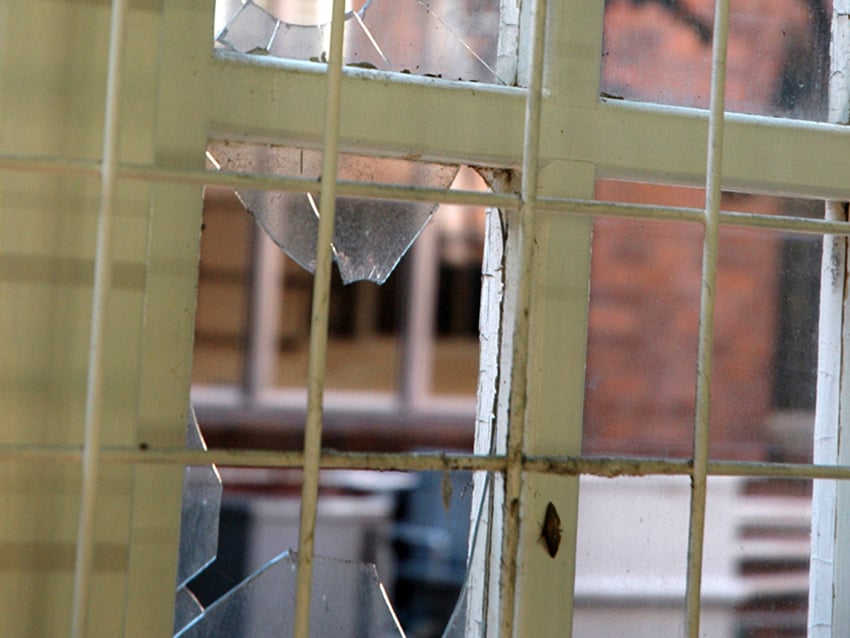
What can you do in eight minutes? Check your e-mail, make a quick lunch, run to the store? Eight minutes doesn’t give law abiding citizens the opportunity to achieve much—but that’s all the time a burglar needs to ransack your property. Many burglars have said that it takes only 8-12 minutes to get in and out of a home.
That’s quick! But a burglary needs to be fast and the longer the crook stays inside your house, the greater the chances of being caught. So the experienced burglar develops a process that’s swift, efficient and very professional.
The tips in this article will help you to slow the burglar down—but before you read on, set your watch to synchronize with the break-in clock. By the time you’ve finished, the thief has loaded his truck and moved on to the next victim.
The Break-in Clock
1-2 Minutes
Once the burglar has gained access to your property, they’ll generally follow a set search pattern, providing a burglar alarm hasn’t sounded. First stop is the master bedroom, where most of the cash, jewelry and other valuables are likely to be found.
Homeowners still make common mistakes, leaving valuable items in obvious places such as drawers, dressers, bedside tables, or under the bed. Reformed burglar Richard Taylor gave an excellent insight into a thief’s mind when he revealed that 34% of criminals expect loot to be stashed in bedroom drawers.
Keeping a safe is your best deterrent, as burglars are working on such a tight schedule they just won’t have time to break into it. Just remember to bolt it down or that safe will go missing too!
3-4 Minutes
The bathroom is the next target, as the burglar targets prescription narcotics which could fetch a high price on the black market. Your medicine cabinet is an obvious place to look, so think about an alternative location for your prescription drugs, preferably hidden from view.
Under the sink or behind the toilet are two options to help throw a burglar off. Remember, the thief is likely to spend two minutes in here as a maximum so any delay should see them moving on to the next room.
5-6 Minutes
The thief is now running out of time, so the next stop could be the living room, the kitchen, or the family room. As they near the end of their brief but comprehensive spree, your burglar is now looking for high ticket items like laptops, iPods, digital cameras and tablets so don’t leave them lying around and in plain sight. Fit interior locks on doors leading to rooms where your electronics are usually kept. At this stage, the criminal is rushing to get the job done and extra security will frustrate and throw them off the trail.
Thieves can also target your personal information, so always switch your PCs and laptops off when they’re no longer in use. Always keep your devices password-protected and, if possible, look to store vital files on sites that are hard for thieves to access, such as Dropbox – an online data cloud storage portal.
To keep passwords and other sensitive information safe, try 1Password, a password generation and encryption software.
7-8 Minutes
The heist is almost complete and at this point, your burglar will usually call a colleague to meet them near your house to help load all your stuff into a car or van. Once safely on board, they’ll drive away to the next target and continue their never-ending cycle of crime.
If you’d rather not be involved in the first place, there are always ways to turn a burglar away at the door. Thieves are looking for a quick and simple theft, so any delays or deterrents are likely to steer them away from your property and switch their attention to an alternative target. An effective security system is the first step—if the thief can see you have equipment installed, they’re almost certain to pass you by.
You can also leave the TV or stereo on while you are out as this will give the impression that someone is at home. In addition, most burglars admit that they will not enter a property if a large dog is present.
Every house can be vulnerable to theft—once homeowners accept that fact, they can take a number of steps to protect against burglary and avoid becoming another crime statistic. Use the tips outlined in this article on ITS to help keep your valuables safe and to give you that important peace of mind while you’re away from home.
What could you do in eight minutes?
Editor-in-Chief’s Note: Please join us in welcoming Kevin Raposo of SimpliSafe as a contributor on ITS Tactical. Kevin writes about issues relating to home security, crime and safety. When not writing on security topics, he spends time with friends and family, as well as enjoying the occasional hike.